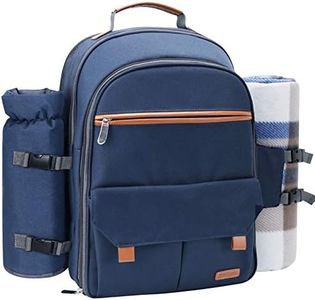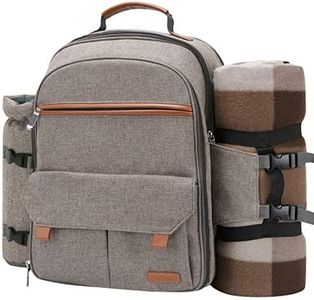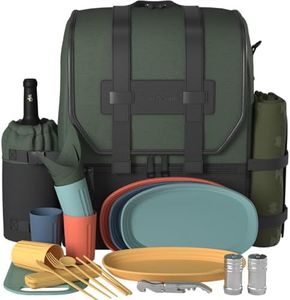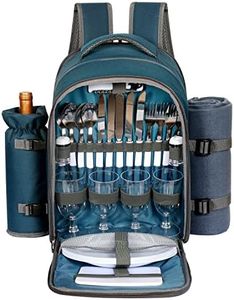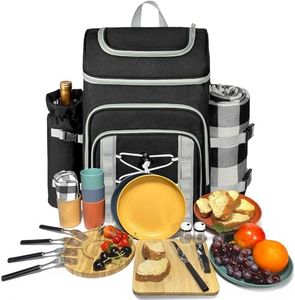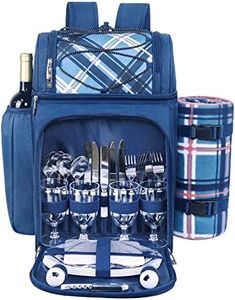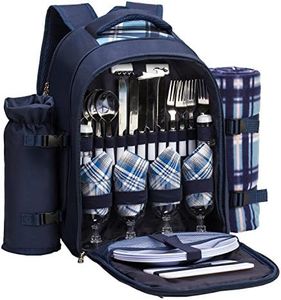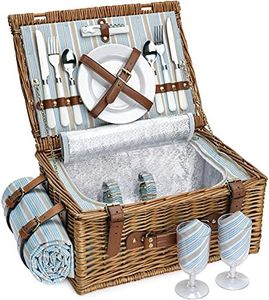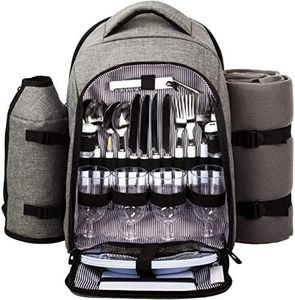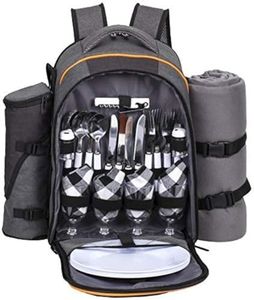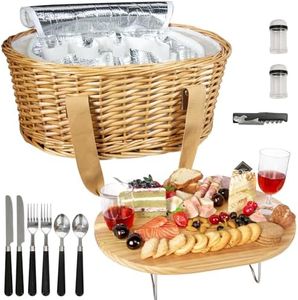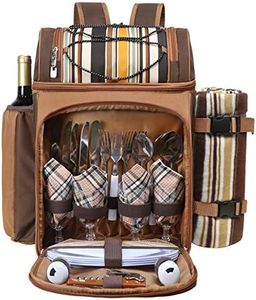We Use CookiesWe use cookies to enhance the security, performance,
functionality and for analytical and promotional activities. By continuing to browse this site you
are agreeing to our privacy policy
10 Best Picnic Backpacks
From leading brands and best sellers available on the web.Buying Guide for the Best Picnic Backpacks
Choosing a picnic backpack is all about finding a bag that fits your lifestyle, the number of people you want to serve, and the kind of picnics you enjoy. Picnic backpacks are designed to make transporting food, drinks, and accessories easier while keeping everything organized and fresh. To pick the best picnic backpack for your needs, you should consider features that enhance convenience, comfort, and your typical use-case—whether you go for casual outings for two or larger gatherings with friends or family. Understanding the key features will help you focus on what matters most for your personal picnic adventures.Capacity and SizeCapacity and size refer to how much the backpack can hold—both in terms of food, drinks, and included accessories. This is important because the right size ensures you don’t carry too much bulk for a small outing, or end up with too little space for group gatherings. Small backpacks are great for solo or couple picnics and are lighter to carry, while medium ones suit a family of four, balancing space and comfort. Large backpacks handle six or more people and can pack substantial items, but they can be heavier. Think about how many people you usually picnic with and how much you need to carry before choosing the size.
Included AccessoriesMany picnic backpacks come with accessories like plates, cutlery, glasses, napkins, a corkscrew, or even a blanket. This is important because it saves you time and hassle, ensuring you always have the essentials ready. Some sets are basic for quick picnics, others are more elaborate for gourmet experiences. Consider what you actually use on your outings: if you love a simple lunch outdoors, a few basics may be enough, but for wine and cheese nights, look for more complete kits. Assess both your habits and how much gear you want to bring.
Insulation and CoolingInsulation refers to how well the backpack keeps your food and drinks at the right temperature. This spec is crucial when picnicking, especially in warm weather or if you're carrying perishable items. There are fully insulated main compartments, partially insulated pockets, or none at all. Full insulation is ideal if you carry sandwiches, salads, or chilled drinks, while partial insulation is fine for dry goods. If you mostly bring non-perishable snacks, insulation is less critical. Match the insulation level to the kind of food you typically pack.
Comfort and Carrying FeaturesComfort and carrying features include padded straps, ergonomic design, and extra handles, which determine how easy and pleasant the backpack is to carry over distances. If you're walking longer to reach your spot, features like padded shoulder straps and a breathable back make a huge difference. For those picnicking near the car, simple designs may suffice. Think about your usual arrival method and distance, and prioritize carrying comfort if you're often on foot.
Durability and MaterialDurability covers how well the backpack stands up to wear and tear, including the fabric type, seams, and zippers. This matters for anyone looking for a bag to last through several seasons and varying outdoor conditions. Backpacks can range from lightweight fabrics (easy to carry but less rugged) to heavy-duty waterproof materials (heavier but more durable and easier to clean). If you picnic frequently or in varied weather, invest in tougher materials. If your use is casual, lighter materials may suffice.
Organization and CompartmentsOrganization relates to the number and type of pockets or sections inside the backpack. This is important to keep food, drinks, and accessories separated, avoiding spills or crushed snacks. Some backpacks have lots of compartments for specific needs; others keep it simple. If you like everything in its place and bring many small items, plenty of pockets and dividers are helpful. If you’re a minimalist packer, a simple main compartment may work best.
